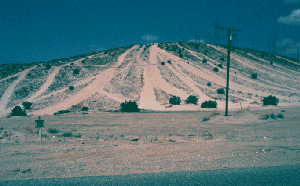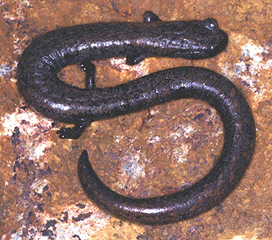- Home
- About S&T
- Taxa/Organisms
- Ecosystems
- Issues
- Methods & Tools
- Reports & Publications
- Location
- Search
June 2003 | Publisher: USGS | Science Center: Western Ecological Research Center (WERC, Sacramento) | Format: URL
www.werc.usgs.gov — Instructions for ordering equipment and culture media; summary of how to draw blood and conduct nasal lavages; and information on how to contract for laboratory analysis and ship laboratory samples.

March 2003 | Publisher: USGS | Science Center: Patuxent Wildlife Research Center (PWRC, Laurel) | Format: .PDF
www.pwrc.usgs.gov — Summary of Patuxent Wildlife Research Center's progress to assess the status of Northern diamondback terrapins in the Chesapeake Bay. PWRC's objectives included providing "information on current habitat type and activities of the diamondback terrapin," and evaluating "the genetic relatedness, levels of gene flow and degree of isolation of More...

June 2001 | Publisher: USGS | Science Center: Western Ecological Research Center (WERC, Sacramento) | Format: URL
www.werc.usgs.gov — Salvage of injured, recently dead, ill, and dying desert tortoises is a very important part of recovery programs for these reptiles. Salvaged desert tortoises can provide a wealth of information about such subjects as health, disease, presence of heavy metals and other toxicants, and causes of mortality in populations. When tortoises are salvaged More...

Publisher: USGS | Science Center: Western Ecological Research Center (WERC, Sacramento) | Format: .PDF
www.werc.usgs.gov — One cause for declines in desert tortoise populations is predation on juveniles by common ravens (Corvus corax), a predatory bird species native to the Mojave Desert. The Recovery Plan for the Desert Tortoise recommended that research be conducted on sources of mortality (including natural predation). This study was implemented to investigate the More...

Publisher: USGS | Science Center: Western Ecological Research Center (WERC, Sacramento) | Format: URL
www.werc.usgs.gov — This project started to conduct an extensive review of the literature pertaining to restoring degraded desert tortoise habitat, with emphasis on the Mojave Desert. Recovery to pre-disturbance plant cover and biomass may take from 50-300 years while complete ecosystem recovery may require over 3,000 years. Restoration can be used to enhance the More...

Publisher: USGS | Science Center: Western Ecological Research Center (WERC, Sacramento) | Format: URL
www.werc.usgs.gov — This site is a field guide to the reptiles and amphibians of coastal Southern California, including species accounts, illustrations of tadpoles, and images of different habitat types. The guide also contains a glossary of terms, a map of the study area, and types of habitats.

Publisher: USGS | Science Center: Forest and Rangeland Ecosystem Science Center (FRESC, Corvallis) | Format: URL
fresc.usgs.gov — Description of a project to survey and monitor the western pond turtle, a species in Oregon's critical list. Includes statement of problem, objectives, methodology, related publications, and contact information.

Publisher: USGS | Science Center: Fort Collins Science Center (FORT, Ft. Collins) | Format: URL
www.fort.usgs.gov — Captive desert tortoises (gopherus agassizii) are getting a "second chance" to live and reproduce in the deserts of the southwest thanks to a unique partnership among state and federal agencies in Nevada. As part of the Desert Tortoise Translocation and Habitat Efficacy Study, captive desert tortoises will be released starting March of 1997 onto More...

Publisher: USGS | Science Center: Western Ecological Research Center (WERC, Sacramento) | Format: URL
www.werc.usgs.gov — Little is known about the western pond turtle, a species protected by the State of California. The U.S. Geological Survey, Bureau of Land Management, and the California Department of Fish and Game are together studying the ecology of the turtle: distribution and status, demographic structure, clutch size and frequency, and seasonal changes in More...
.jpg)